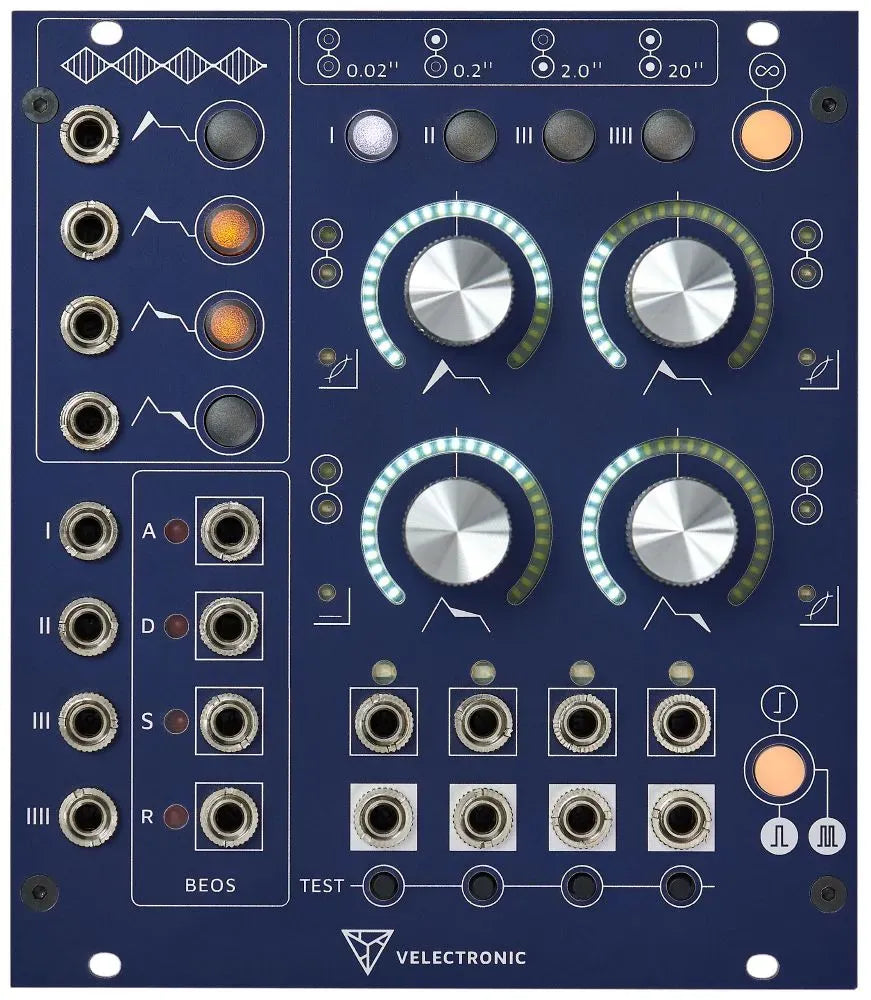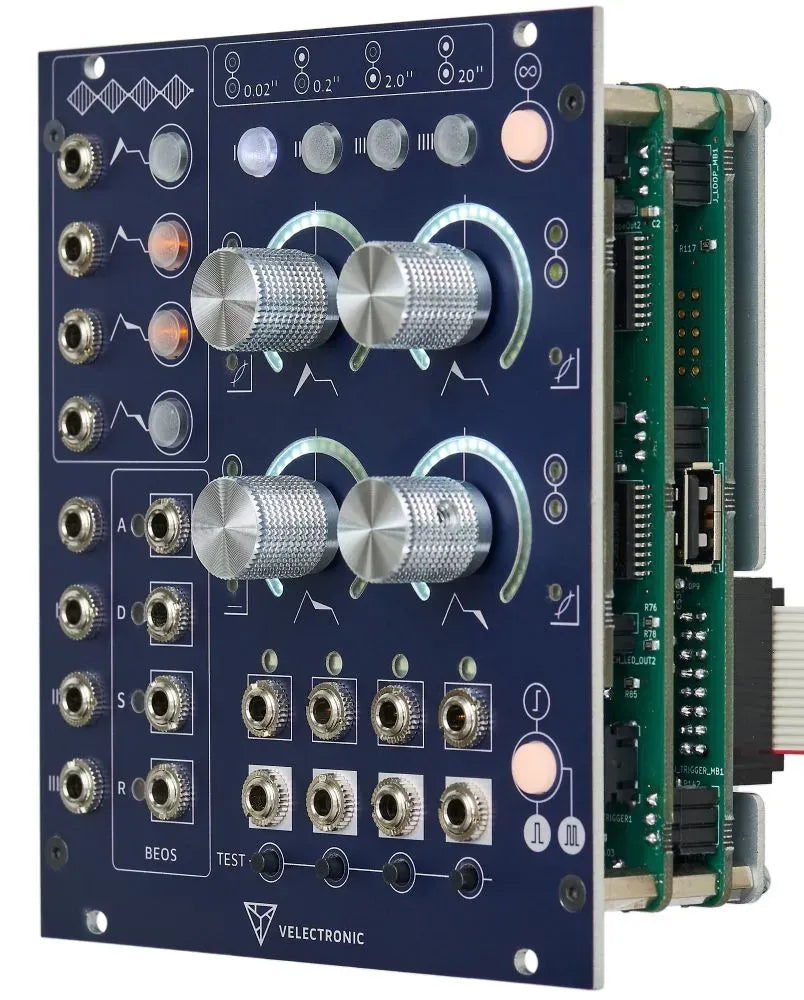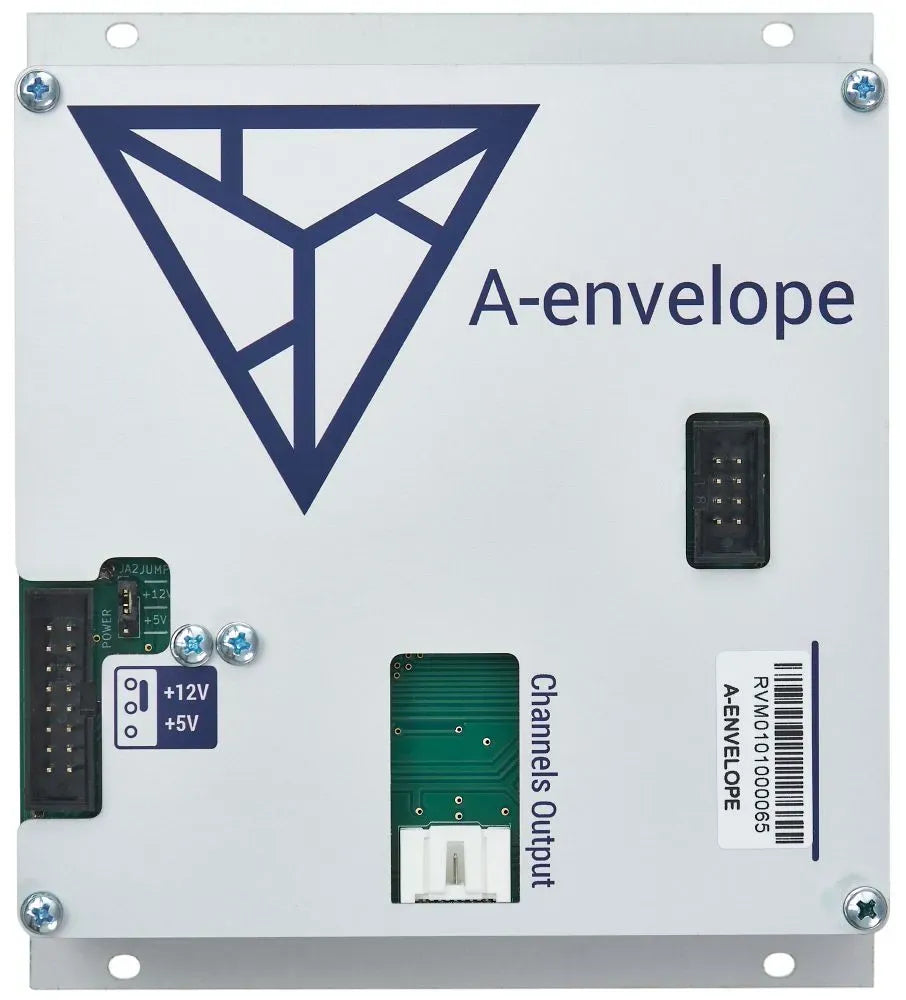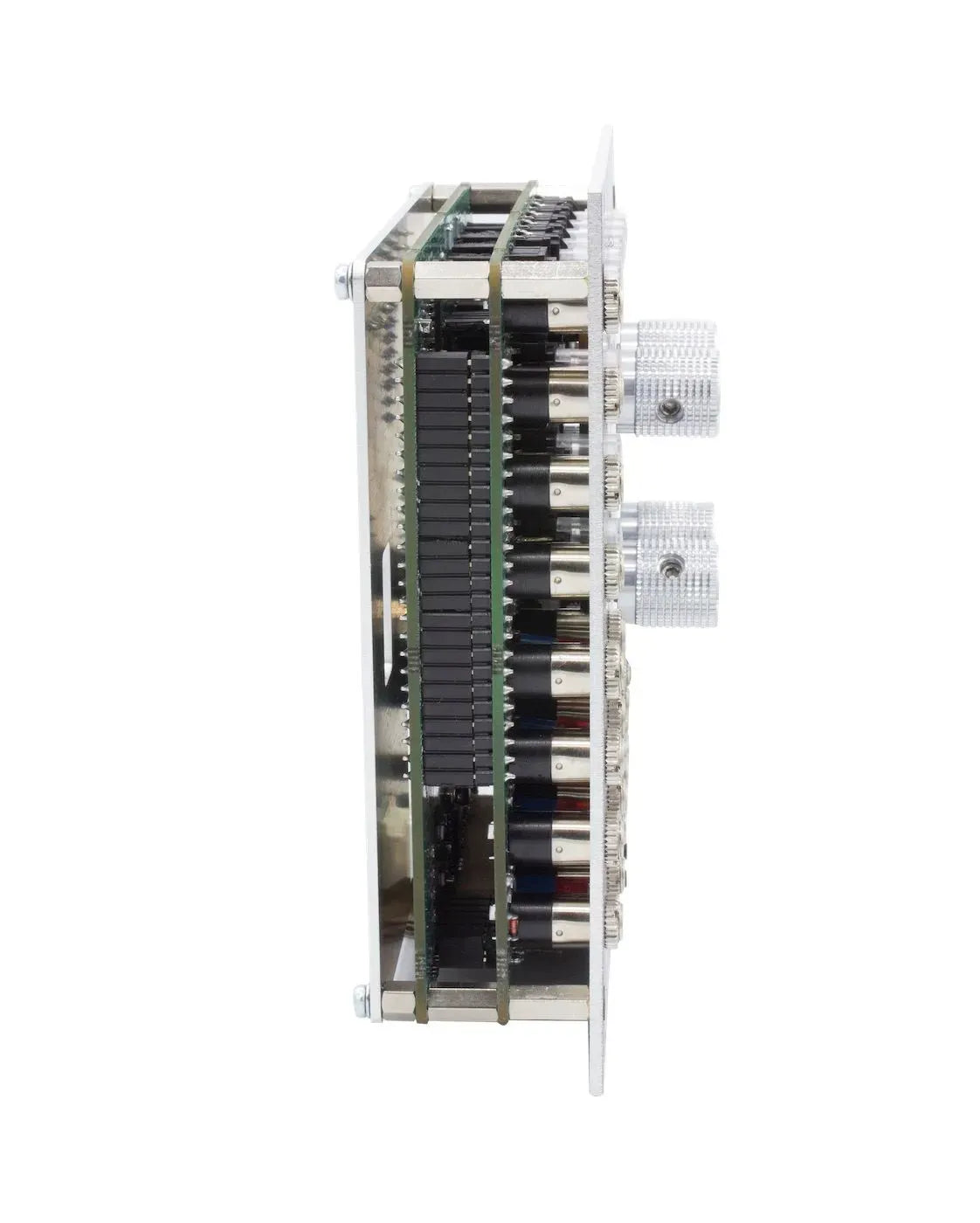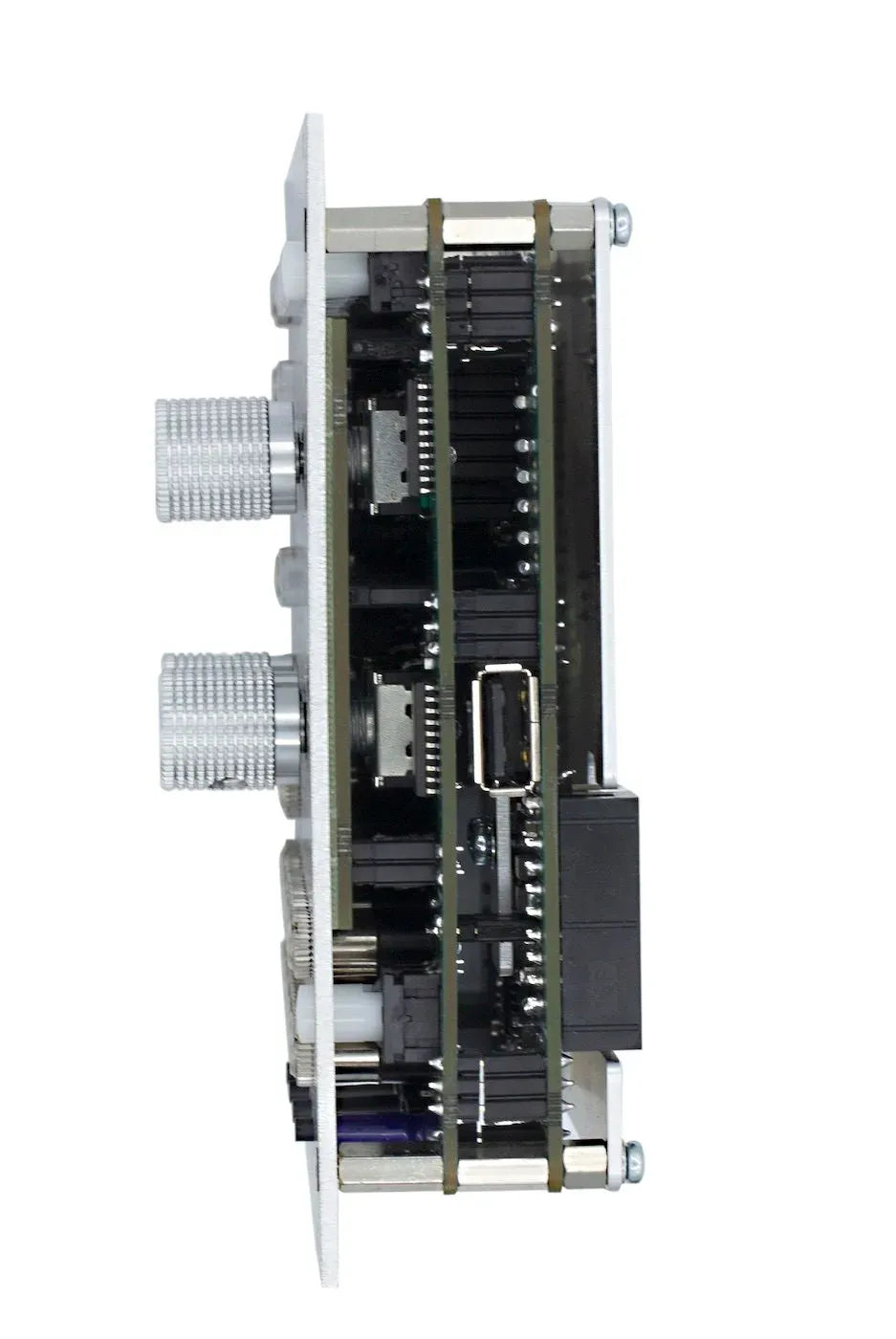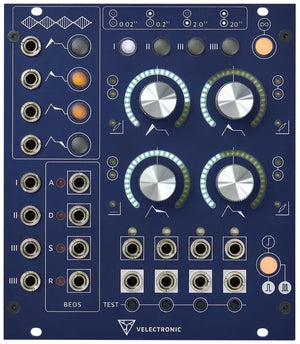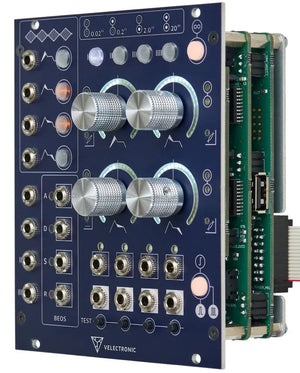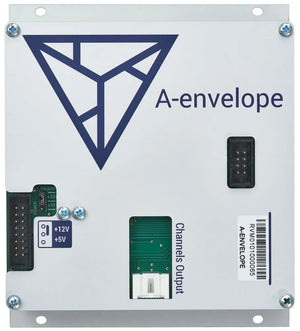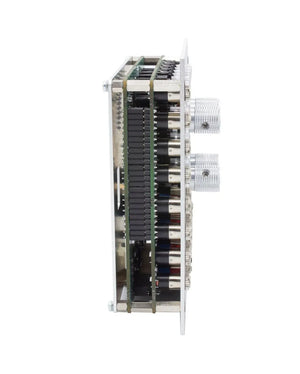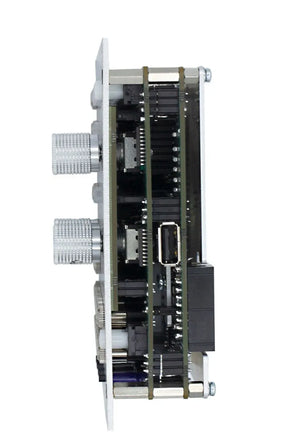Associative Quadruple Envelope
Worlwide Shipping
We ship worldwide from our EU warehouse.
Dedicated Support
1-Year Warranty on every purchase.
Guaranteed Safe Checkout
Quadruple envelope specialized for polyphonic and multitimbral systems. The module is very high quality manufactured and allows due to the endless encoders a very pleasant operation and switching between the individual envelopes.
Associative Quadruple Envelopes allows easy grouping of multiple envelopes, making it ideal for polyphonic and multitimbral patches. Each envelope can also be used as an LFO and is stable even at very high frequencies. Stages can be given different characteristics (linear, logarithmic, exponential) and their maximum amplitude can also be set. Assignable CV inputs can be applied to the parameters (duration, characteristic, amplitude) and the BEOS outputs can output gates or triggers either at the beginning or at the end of an envelope. BEOS outputs can therefore also be used to chain several envelopes.
It is recommended to activate the +5 V switch to relieve the +12 V rail, otherwise 245 mA are consumed by the +12 V rail. When the +5 V switch is active, only 35 mA is consumed from the +12 V rail and 170 ma from the + 5 V rail (the current consumption on the -12 V rail is constant). If no +5 V rail is available, the high current consumption should definitely be taken into account when planning the case.
Documentation
Here below you can find all the current available documents, including the one delivered with the module.
Firmware updates
Here below you can find all the available firmware update, including the one delivered with the module.
- latest/a-envelope_v3_2_2.hex — 17/5/2024, 19:05:51
- latest_a-envelope_v3_2_2.release-notes.txt — 17/5/2024, 19:05:51
